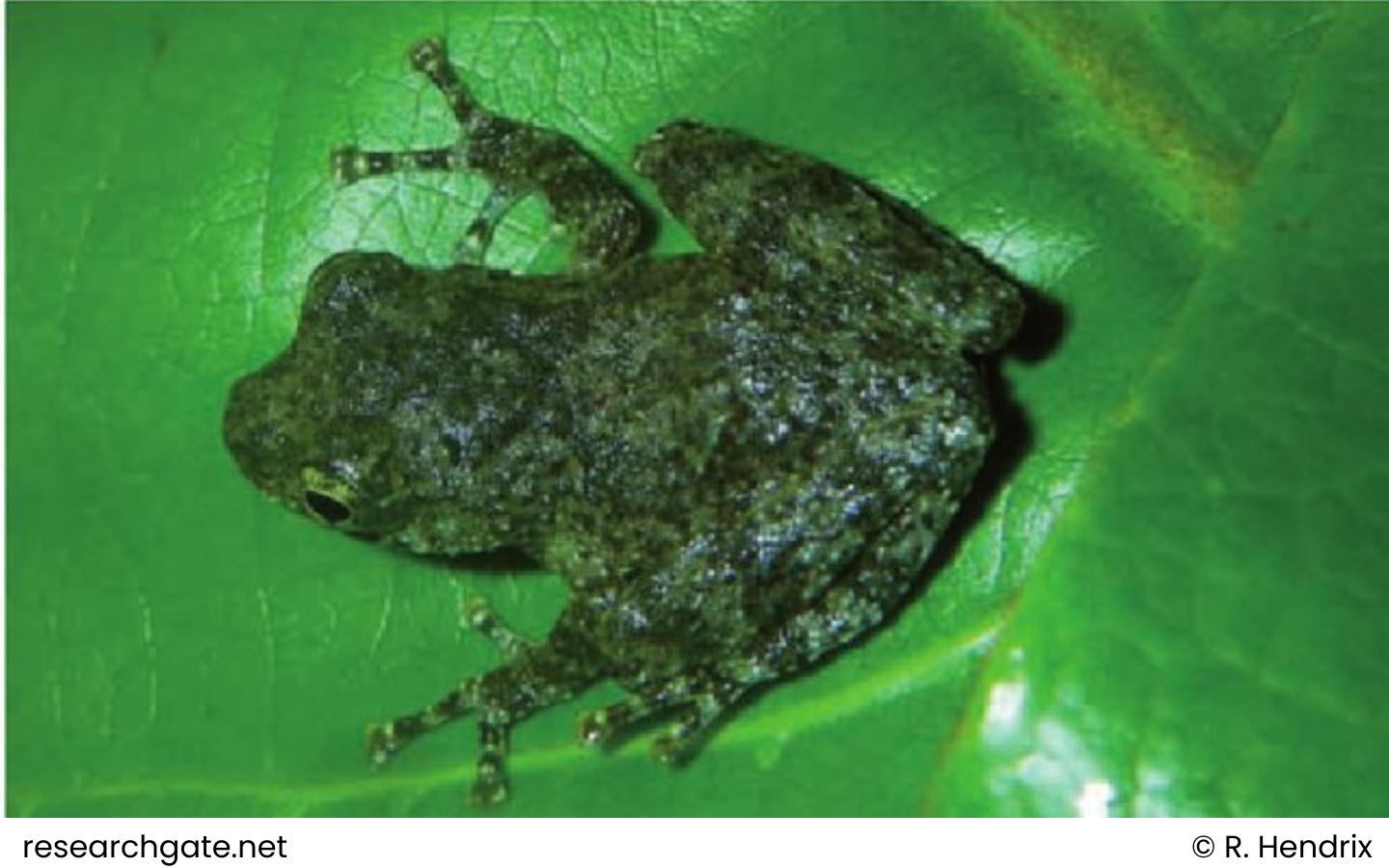
Science name: Philautus maosonensis – Bourret, 1937
Taxonomic: Animalia>> Chordata>> Amphibia>> Anura >> Rhacophoridae >> maosonensis
Species status: Endemic ; IUCN status: LC (Least Concern)
Description:
Physical Characteristics:
Though detailed descriptions of Philautus catbaensis‘s physical characteristics are limited, similar species in the Philautus genus typically have small to medium-sized bodies with smooth or slightly granular skin. Many species in this genus exhibit a range of colors, often with green or brown hues and patterns that blend into their forest environments. Males are generally smaller than females, with subtle sexual dimorphism observed in most species.
Distribution and habitat:
Altitude:
Philautus catbaensis is found at elevations ranging from 900 to 1,700 meters above sea level (asl).
Range:
This species is known from several provinces in northern Vietnam, including Lang Son, Vinh Phu, and Ha Giang, but it may also occur in adjacent areas of southern China, such as Guangxi and Yunnan provinces. These areas have similar habitats and elevations to its known range. Its estimated extent of occurrence (EOO) is 20,270 km². Further surveys may reveal the species’ presence in these regions.
Habitat:
The species is associated with humid montane broadleaf evergreen forests, mixed evergreen and deciduous forests, and karst forests. It is typically found on vegetation near, but not directly adjacent to, water. The species is forest-dependent, and ongoing habitat disturbance is affecting some of its known localities.
Behaviour and ecology:
Lifestyle:
Philautus catbaensis is an arboreal species commonly found on vegetation in humid montane forest habitats. Males have been observed calling from vegetation both alone and in groups during the breeding season in May. The species is not migratory and likely spends most of its life in the same montane forest environments.
Reproduction:
While the reproductive biology of Philautus catbaensis is largely undocumented, it may reproduce via direct development, as is typical for many species in the genus. This means that eggs develop directly into miniature frogs without a free-swimming tadpole stage.
Conservation and status:
IUCN Red List Category and Criteria:
Philautus catbaensis is listed as “Data Deficient” under the IUCN Red List, as there is insufficient information to make a full assessment of its population trends, range, or ecological needs. It was last assessed in 2020.
Threats:
The primary threat to the species is habitat degradation. Expanding agriculture, logging, and other forms of land use are contributing to the ongoing decline in the quality and extent of suitable forest habitat within its range. These activities are particularly concerning in montane and karst forests, which are already under pressure from human activities.
Conservation Actions:
There are currently no specific conservation measures in place for Philautus catbaensis. However, the species is found in regions that may benefit from general forest conservation efforts. Additional field surveys are needed to better understand the species’ population size, distribution, and ecological requirements.
Crocodile Trail – The Best Birding Trail in Cat Tien National Park
If you’re a birder or nature photographer planning a trip to Vietnam, few places offer [...]
Cong Troi Trail – Top 1 Dalat Plateau Birding Trail Experience
If you’re a birder or nature photographer planning a trip to Vietnam’s Central Highlands, the [...]
How to Identify the Greater Sand Plover, Tibetan Sand Plover and Siberian Sand Plover
Identification Differences within the Sand Plover Complex: The sand plover group, which was traditionally divided [...]
Highlights of Cat Tien National Park Reptiles and Amphibian Endemics
Spanning over 71,350 hectares of tropical forests, grasslands, and wetlands, Cat Tien National Park is [...]
Highlights of Cat Tien National Park Mammals in a World Biosphere Reserve
In addition to reptiles and birds, Cat Tien National Park is also rich in mammals, [...]
Kontum Plateau Endemic and Highlight bird
Kontum Plateau Endemic And Highlight Bird species like Chestnut-eared Laughingthrush and top birding routes while [...]